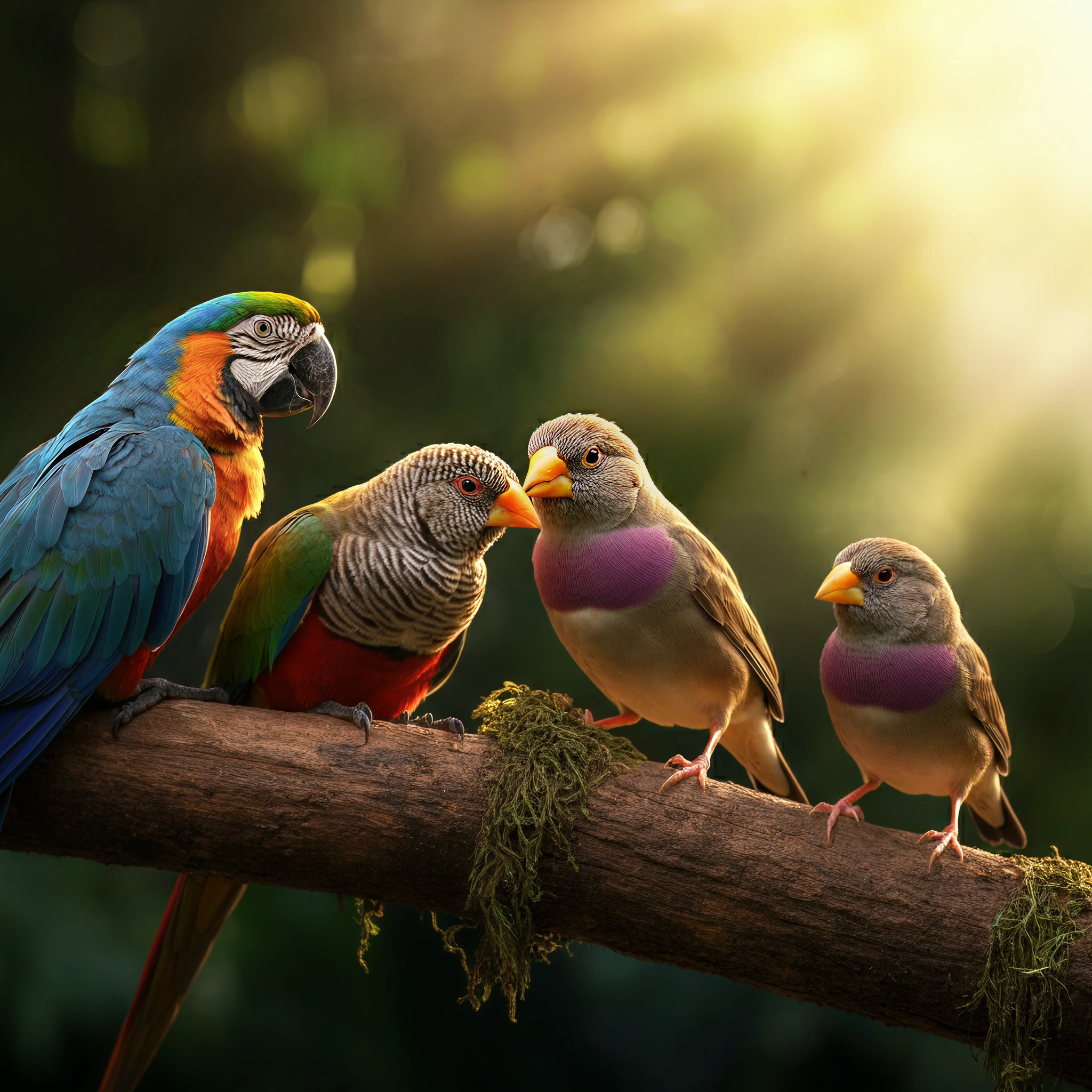When we think of birds, we often imagine them fluttering through the skies, singing cheerful songs, or building intricate nests. What we may overlook is the profound social connections many bird species forge within their flocks. Yes, birds can be friends too, forming bonds that resemble our own human camaraderie. Let’s take a closer look at the fascinating and heartwarming world of avian friendship.
What Are Bird Friendships?
Contrary to the longstanding belief that only humans and some mammals engage in complex social behaviors, research reveals that birds often form special bonds, standing by each other in extraordinary ways. Superb starlings, for instance, have been observed helping unrelated flock members, not just as an act of immediate kindness, but with an expectation of reciprocity. This behavior, which mimics human friendships, is called “reciprocal helping.”
Dr. Dustin Rubenstein of Cornell University explains, “These relationships may not look exactly like what we call friendship, but they are strikingly similar. Birds help others because they know they’ll be helped in return at some point. It’s a give-and-take dynamic built on trust.”
Examples of Bird Friendships
Superb Starlings
Superb starlings, native to eastern Africa, live in flocks of up to 60 members. While some birds help to raise offspring via family bonds, many “helpers” are unrelated immigrants who form strong, deliberate ties with specific birds in their group. They assist each other by defending nests or bringing food, and these cooperative behaviors endure across breeding seasons.
Parrots
Parrots, some of the most intelligent bird species, are known for forging life-long connections. Amazingly, they greet their “friends” with unique calls and share food with their closest companions. These affectionate interactions showcase the deep emotional bonds parrots develop.
Rooks
Rooks, a member of the crow family, also demonstrate friendly behavior. Studies show that rooks not only groom each other but possess the ability to console a distressed flockmate by staying nearby or gently preening them, a sign of empathy that’s rare in the animal kingdom.
Geese
You’ve probably seen geese flying in their famous V-formation. What may surprise you is how loyal they are to their flock. Geese not only form romantic pair bonds but will mourn when they lose a mate and maintain social bonds with individuals from their group.
Vampire Finch
Yes, even the blood-feeding vampire finches of the Galapagos Islands show camaraderie by banding together to defend their territory or find resources.
Why Do Birds Form Friendships?
Ornithological studies suggest that birds form social bonds for practical purposes and survival. Some reasons include:
- Cooperation: Working together to raise young or share resources strengthens the group’s success.
- Reciprocity: Certain species intentionally “trade” help with flockmates, creating a mutually beneficial relationship.
- Empathy: Birds like rooks and crows comfort their distressed peers as a sign of understanding and support.
Dr. Rubenstein notes, “Bird friendships show us that cooperation extends far beyond immediate kinship. These birds demonstrate profound social intelligence by forming intentional, ongoing relationships.”
How to Support Social Bird Communities
If you’re a bird lover or simply someone inspired by their beautiful friendships, you can take steps to support and nurture bird communities near you. Here’s how:
- Install Feeders with Multiple Perches
Encourage diverse groups by placing large feeders that allow several birds to feed at once. Options like platform feeders create more opportunities for interaction.
- Provide Fresh Water
A birdbath or fountain not only attracts birds but fosters a communal gathering spot where they can drink or preen together.
- Plant Native Vegetation
Create a natural space for birds to interact by planting native trees, bushes, or flowers. These plants often provide food, nests, and shelter.
- Avoid Pesticides
Toxic chemicals can harm birds or their food sources. Opt for organic gardening to ensure a safe habitat for your feathered visitors.
- Set Up Nest Boxes
Some species are cavity-nesters. Installing birdhouses or nest boxes can provide vital nesting areas for birds that raise their young collaboratively.
- Watch and Learn
Spend time observing bird behavior in your yard or local park. You’re bound to witness instances of loyalty, cooperation, and even playful antics that showcase their sociability.
The Importance of Recognizing Bird Social Lives
Birds are more than beautiful creatures; they’re complex, emotional beings capable of extraordinary camaraderie. Understanding their social behaviors deepens our connection with the natural world, reminding us that friendships and cooperation transcend human boundaries.
From the reciprocal aid of superb starlings to the empathetic grooming of rooks, these friendships offer a glimpse into avian intelligence and resilience. By fostering environments that allow birds to thrive, we can nurture these relationships and ensure their remarkable stories continue.
Join the bird-loving community and discover how your efforts can make a difference. Whether you’re setting up a backyard feeder or joining bird conservation groups, every small step helps to support these incredible creatures and their fascinating friendships.
Take a moment to observe the birds around you. Who knows? You may just spot a pair of feathered friends looking out for one another.








